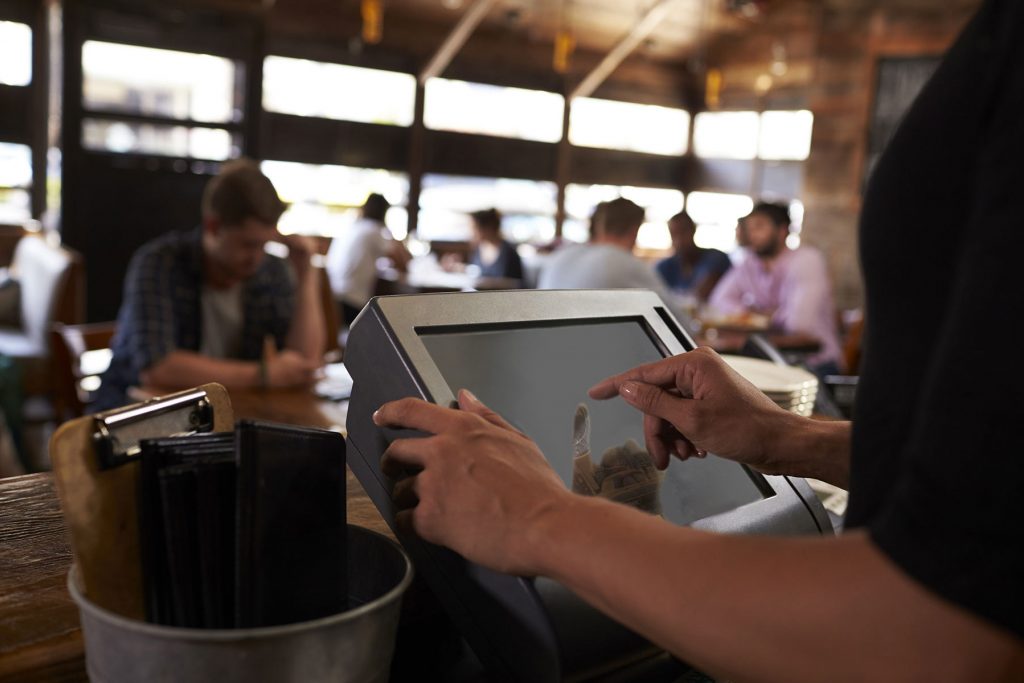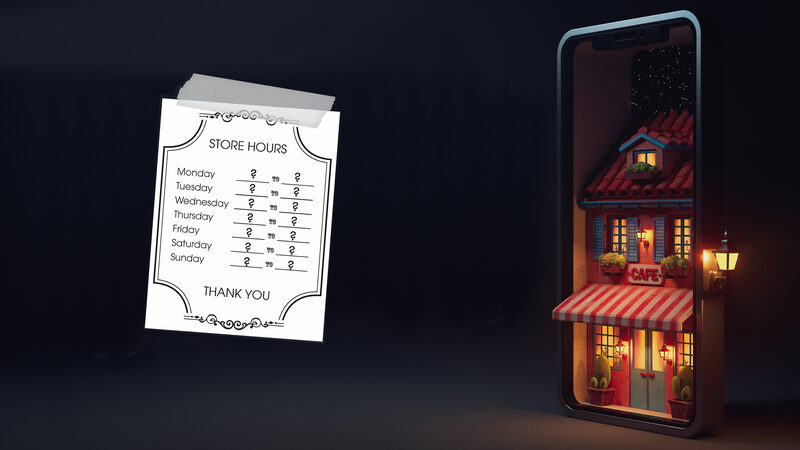News
April 05, 2021
Considering a New Point of Sale System?

You’re not alone.
As Harbor Foodservice’s Restaurant Consultant, one of the favorite aspects of my role is that I’m granted so many opportunities to learn techniques, insights, perspectives, and innovations from clever and creative restaurant professionals and carrier pigeon what I learn to other clients. Restauranteurs have so few opportunities to connect with their peers, that I can sometimes fill that role is a privilege.
I was asked recently if I’ve noticed themes in how our industry has adjusted so far to the Covid era. Breaking the past year up into adjustment periods, we started with Adaptation followed by Innovation. The period we seem to be in now is Housekeeping. We’re often so busy putting out fires, we don’t have the time or attention for fire prevention. This current phase seems to be solidly set on future fire prevention.
A combination of long overdue-ness, PPP loans/grants, shifted consumer and employee habits, and technological advancements is inspiring operators to improve their systems, processes, and procedures. Whether it’s building in greater efficiencies for our post-Covid comeback, to get access to new technologies that don’t integrate with what they have, or a long past-due upgrade, their Point-of-Sale System is top of mind.
I’ve collaborated with dozens of clients, researched and stress tested several POS systems, participated in countless demos, and advocated for special pricing and/or services. Allow me to put on my Harbor Foodservice branded pigeon suit and spin the sign on what we’ve learned along the way.
The two models of restaurant Point of Sale Systems
Cloud Based POS Systems are hosted, stored, and interfaced with via the internet and are currently the industries “go-to” systems. While low upfront costs are an attractive feature, it’s the usability and variety of built-in features and integrations that seem to be driving the greater share of interest.
Some Cloud Based POS providers utilize their own hardware (touch screen terminals, printers, CC machines, kiosks, etc.) most of the providers in this category are iPad based and will connect wirelessly with the other components. In most cases you can source your own equipment -which is a nice option if you’d like to have a back-up terminal if one goes down.
As we emerge from the Covid Era, our historically shallow labor pool is looking to be even more pronounced. Most tablet-based systems offer a mobile POS terminal feature for waitstaff; the more back-and-forth travel you can cut out of the ordering sequence the larger the section you can assign to your staff, potentially running with one less person or more a shift. Even if this isn’t the case, a present server provides better, more attentive service than one running back and forth from tables to terminals.
Server Based POS Systems function like a program on a computer (because they are). These were the POS standard for most of the last 30 years. During the mid-2000 teens, there was a purge in the POS sector that saw large credit card processing and financial corporations buying leading POS brands. In some cases, this was to enter the hospitality and leisure marketplace, others wanted consumer spending data for better forecasting, and some simply wanted to capture more half pennies in credit card processing.
There are still some that have remained relevant and continue to adapt to the needs and expectations of our industry by curating desirable integrations, maintaining (in many cases) superior support and customer service, and offering local troubleshooting often via knowledgeable reseller partners.
The upfront costs are high due to proprietary hardware but tend to have lower ongoing licensing costs. If you’re leaning this direction, reach out to your local reseller; you may scoop a terrific deal on refurbished or used hardware.
Crucial POS System features
While the specific criteria of a POS’s features vary by operations; the following represent the most sought-after features, the “why” behind them, and additional context to better contextualize how they’ll serve you and your restaurant short and long term.
Integration Potential: This essential feature tops the list of criteria for three reasons, two are vital, and the third surely will be in time.
Reason One: Efficiency
Cumbersome processes and unnecessary distractions demand time and attention that we (or our staff) would rather apply towards more important activities or flat out simplify various tasks. Avoidable barriers and challenging tasks often mean important aspects of your restaurant are being avoided and can have a direct connection to turnover rates and loss of consumer loyalty.
There are tools available now that, once integrated, will help you; manage your employees, automate tasks, integrate 3rd Party Delivery/Takeout orders to your in-house system, boost or automate marketing, provide loyalty programs, reservations, accounting, inventory, and so on. Pick your pain and plug in your pain relief.
Reason Two: Accuracy
We can all easily identify something that we know we should be doing that would give us the real, reliable, and actionable insights that matter. In most cases, the reason we don’t is because the process is either too time consuming or too complicated to do ourselves or delegate.
A POS is more than a method of communicating orders, it’s a data gathering and reporting marvel. Why not plug a program into your system that capitalizes on this?
Reason Three: Tomorrow
The POS systems that are built for the needed integrations of today, are poised to serve the unknown integrations of tomorrow. The Covid Era has accelerated overdue innovations in our industry, some new opportunities are already within view, be ready for them and the ones coming in behind them.
In almost every case integrating the right plug-in will save you labor dollars, lower mistakes, ensure accuracy, and provide data you can act on.
Merchant Services/Credit Card Processing: Full disclosure, I have a strong bias against being handcuffed to credit card processing. It’s not for nothing, I’ve encountered far too many circumstances of clients who, after extended periods, examined their merchant services billing history have discovered that expensive rate and fee fluctuations have crept in.
POS systems that have embedded credit card processing have the lowest associated upfront costs. This is an attractive prospect, especially for the restaurateurs whose last POS on-boarding was a Server Based System priced like a new car.
To be fair, some of these POS systems are legitimately terrific with an intuitive interface, all the features you’ll ever need built in, and more. My hesitation is born from caution and in consideration of what the difference of .25% – 1% processing fees will add up to over time.
There is enough competition in the merchant services marketplace that reliable billing and competitive rates aren’t out of reach. I would comparison shop and get some good quotes. If you can’t get that sparkly credit card locked POS system off your mind, you may be able to use the quotes as leverage for lower rates -just be sure to get the agreement in writing and verify it once or twice a year.
Online Ordering Potential: If takeout represents even a small portion of your business, online ordering is crucial. Avoid problematic phone ordering, lower your labor demands, increase check averages, peel diners away from 3rd Party Delivery… I’ll stop there, it’s a long list.
There are solid 3rd party takeout companies out there for restaurants who don’t have the option of plugging into a platform that is integrated with their POS. The overall benefits already partially listed are all there, but integrated online ordering provides you with some extra invaluable features:
- Automatic printing to your kitchen and bar.
- Synchronicity with your dine-in data for reporting that will grant you an easy all-in-one view of your total business.
- You’ll retain all your customer information for use in marketing, loyalty programs, SMS services, and more.
Service and Support: No other industry in my prejudiced mind does service like hospitality. When it’s substandard, it hurts and because when we need it, we really NEED it this shouldn’t be overlooked. Twenty minutes of internetting a prospective POS company’s reviews should help provide an impression of what this potential experience might be like you in the future.
One clever client I’ve been collaborating with on this topic eliminated a potential POS company by calling their support line at 4, 6, and 8 o’clock to test their responsiveness. Each time they were given 45–60-minute wait quotes.
Two other key features of service I look for is setup support and training.
Menu buildout (especially bar menu and modifiers) are tedious. Most providers have a listed charge for menu set up that floats around 500 bucks. Play coy and reserved long enough and they’ll likely comp the service.
Finally, don’t forget to ask or review the company’s training resources. It’s a small aspect with a big impact. Knowing how to best use this tool, understanding its features, and having the resources or opportunity to educate and prepare your staff and future managers will help keep your restaurant more productive and less prone to errors.
Overall User Compatibility: At the end of the day, the best POS system is the one that suits you and your needs. Don’t get a fancy car if you need it to haul pianos. The best support I can offer would be personalized and in consideration of you, your business, the community you serve, and the staff you employ.
Not enough?
I’m employed by Harbor Foodservice to be a resource for our industry. I invite you to connect by reaching out through your Harbor Foodservice Sales Consultant or email me directly andy.cook@harborfoods.com. I’ll look forward to meeting you.


